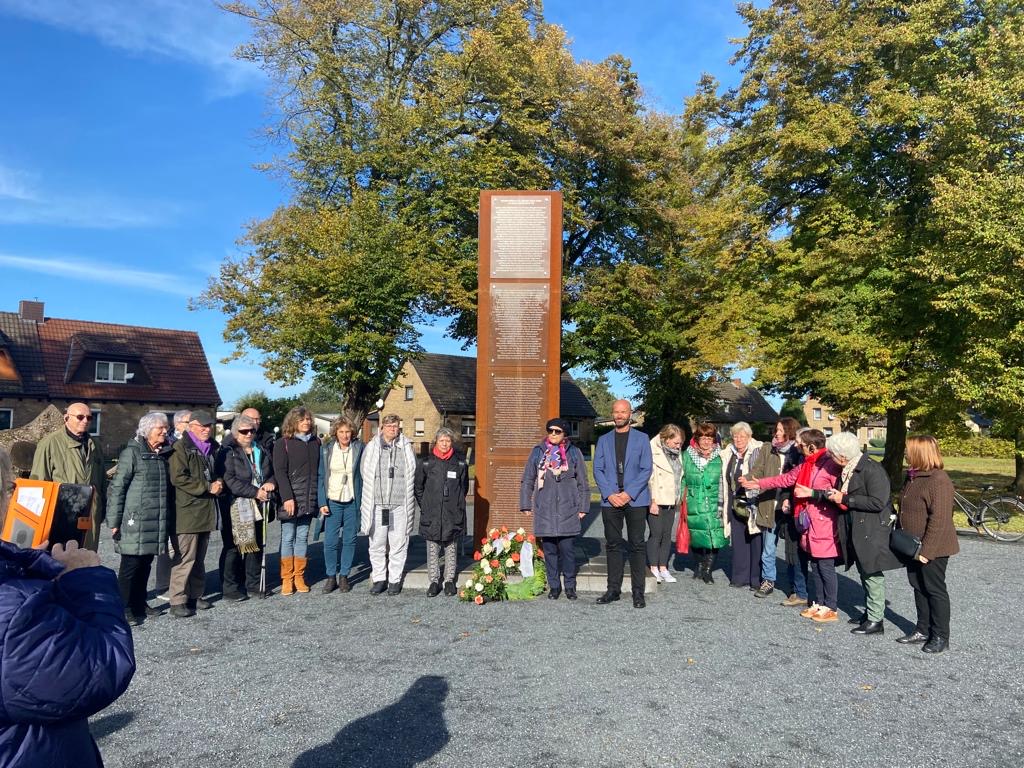RECHLIN, the grave of my comrades
03.03.2024

RECHLIN, the grave of my comrades I knew at a young age what Rechlin meant to my mother Denise Rousseau-Villard, ever since I read the book: La grande Misére (The Great Misery), written by Maisie Renault. In 1971, my mother wrote a text that was published by Christian Bernadac entitled: "Ce qui fut le pire" (What was the worst). My mother and her sister were deported to Ravensbriick in a convoy that included Jacqueline Fleury and Marie-Sylvie Girard-Cordier. The French resistance fighters on this transport were rebels who had been deported by the Nazis as political prisoners to so-called "retaliation camps".
Denise was sent to Kenigsberg on the Oder, then to Rechlin and finally to Ochsenzoll. In Rechlin, in the middle of winter, the deportees camouflaged aeroplanes and dug out the runways on the frozen ground. It was a very large building. There were no beds, we slept on the cement, without blankets. We got dysentery (...) The latrines overflowed. In the morning we collected the dead. What a terrible massacre. The day before the visit, I & my colleagues pointed out my link & Rechlin. The visit was prepared accordingly. On site, we discovered my mother's name on the memorial to the deportees who had worked at the site: a lectern with an extract from "What was that? The "worst". After a wreath-laying ceremony and the reading of the text by four comrades from the IRK, Constance Jaiser asked me to say something. As I have no tears left to cry over this topic, I can use this time to calmly place Rechlin in history. The story of my mother, from her involvement in the Resistance, her resistance until her death. "Rechlin, the grave of my comrades... I can never hear that name without being horrified Dominique VILLARD